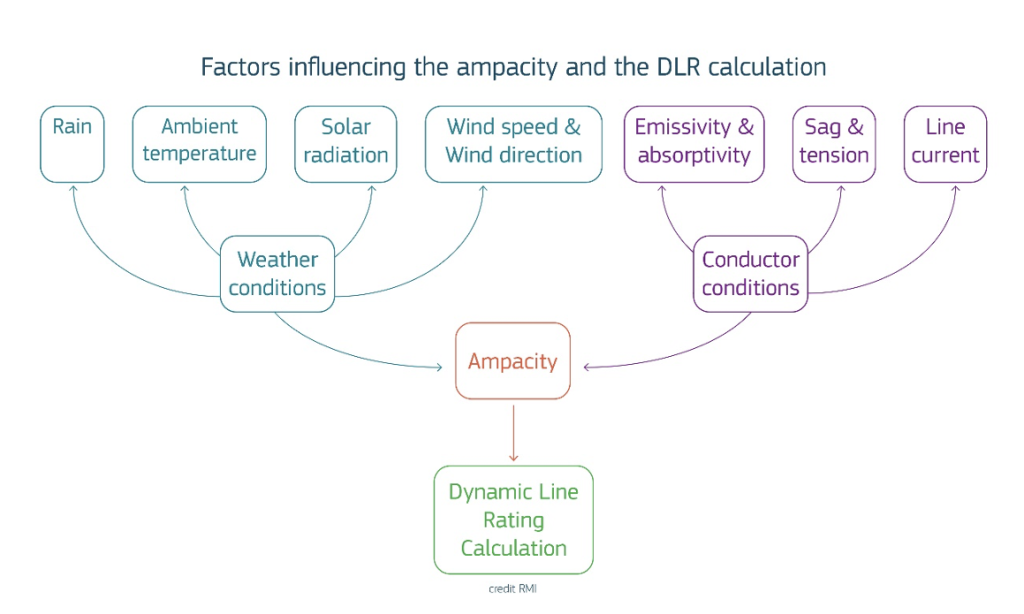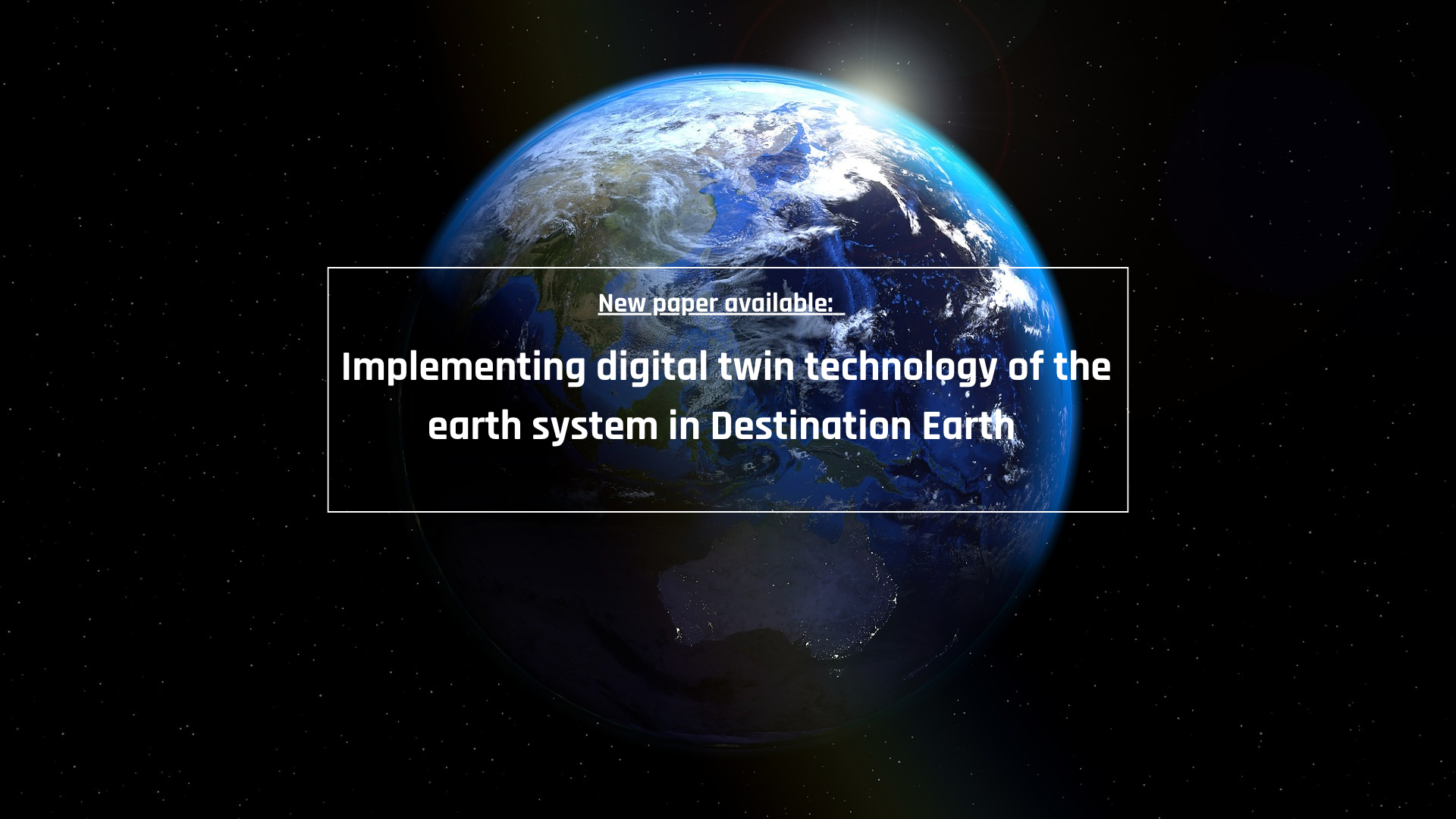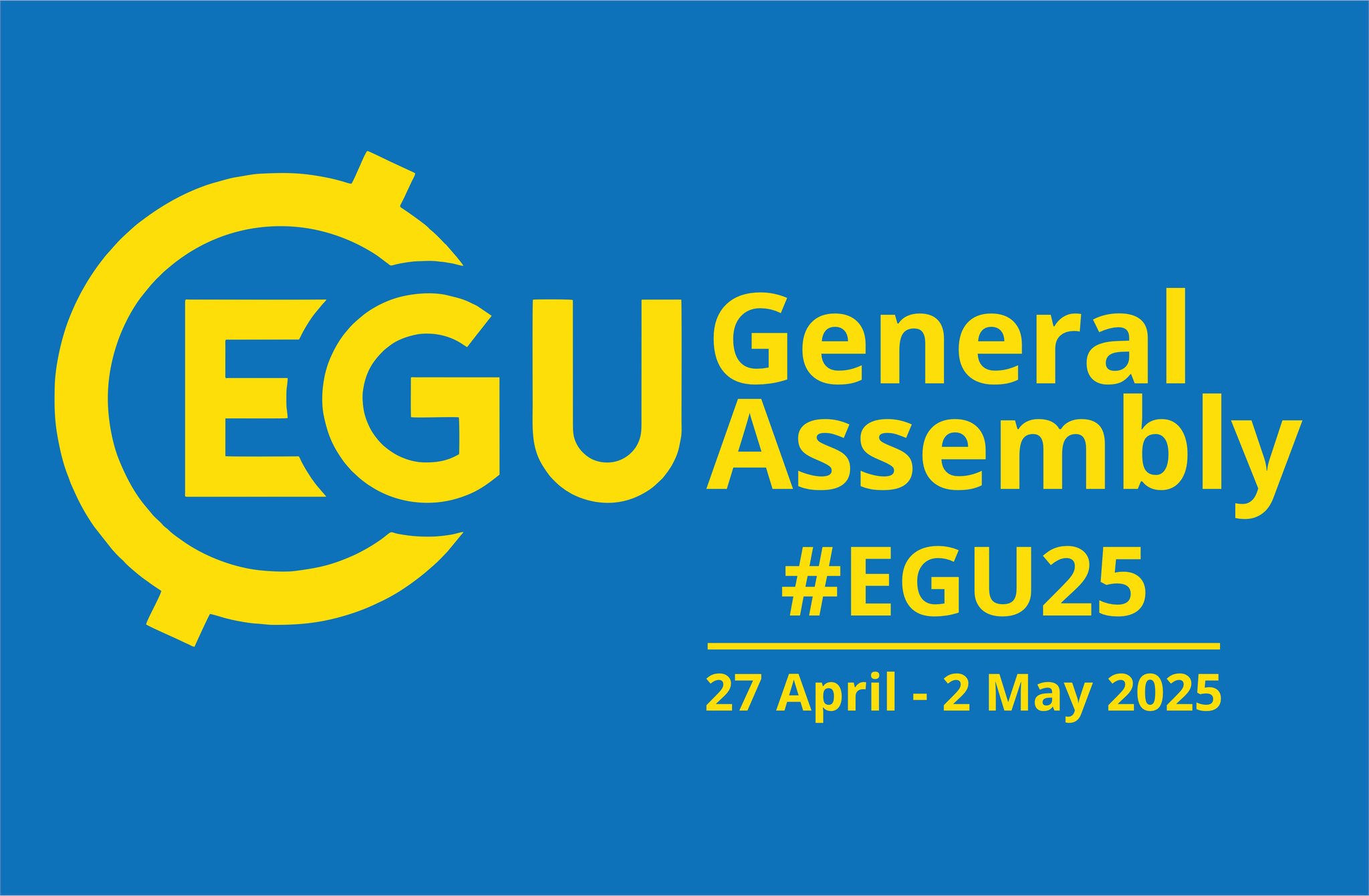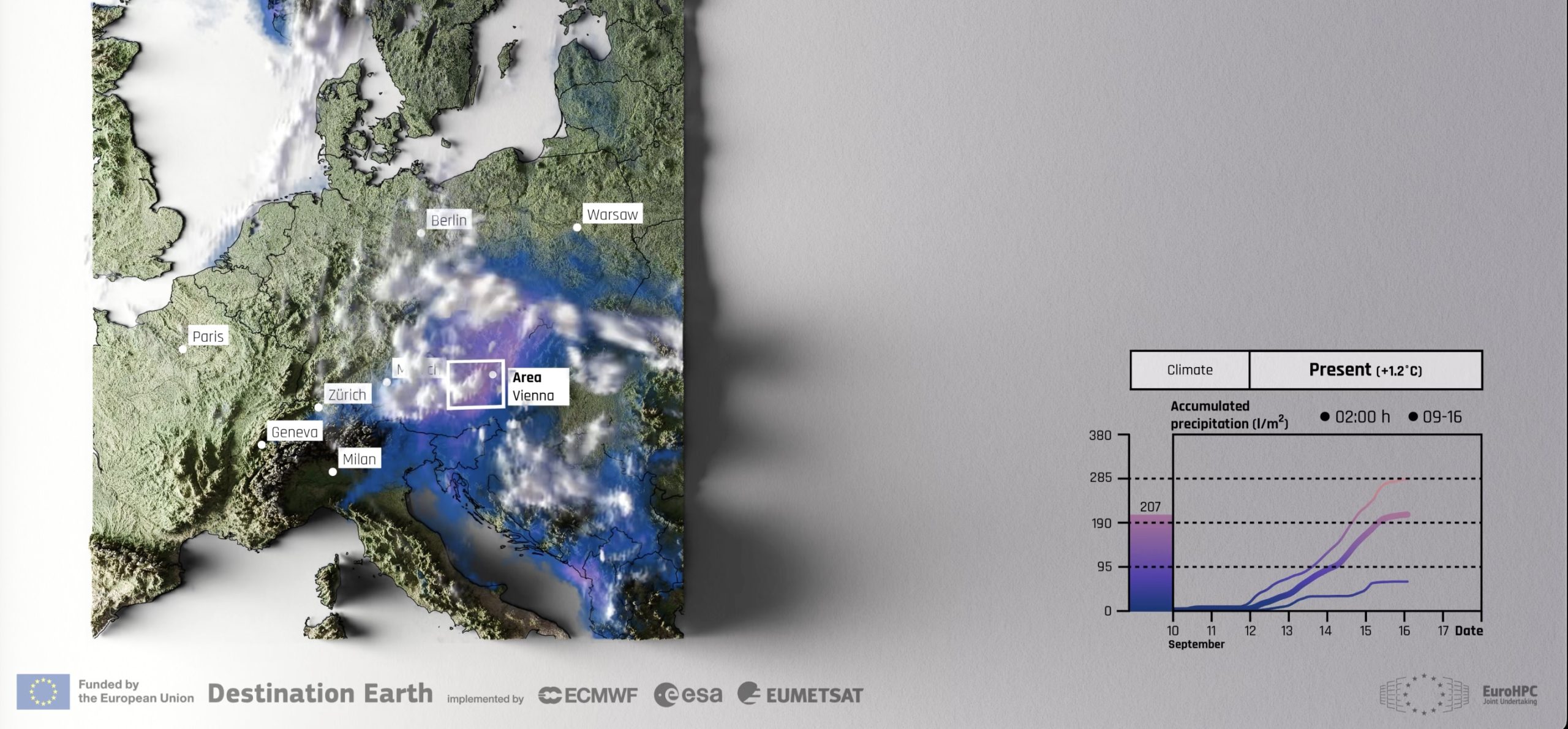
The Royal Meteorological Institute of Belgium (RMI) is developing a pilot service using Destination Earth digital twin data demonstrating how their weather information can benefit operations of high-voltage transmission lines and planning grid operations. The pilot service “High Resolution forecasts for Next Generation Dynamic Line Rating computation” will contribute to address the challenges faced by operators when implementing Dynamic Line Rating (DLR), and advance methods for managing the use of high voltage transmission lines, which is dependent on weather conditions.
Main contractor: Royal Meteorological Institute (Belgium)
What is it? Extracting high spatial and temporal resolution data from the Weather-Induced Extremes Digital Twin (Extremes DT) to improve the Dynamic Line Rating (DLR) energy transmission applications.
Concrete applications examples:
The capacity of electrical transmission lines depends on environmental conditions, including temperature and wind. With adequate information about weather conditions, energy operators can better exploit the available transmission capacities by estimating the actual capacity margins dynamically, depending on current conditions.
Main target end users:
Energy transmission and energy grid operators, infrastructure planners and decision makers.

Digital twin data for energy transmission system operators
The enhanced level of granularity offered by Destination Earth’s Weather-Induced Extremes Digital Twin (Extremes DT) will help energy operators to better exploit the potential of the DLR approach. Variations in temperature, wind speed and solar radiation impact significantly the capacity of transmission lines. The information from the Extremes DT will help to benefit from currently largely unused line capacity margins, reduce the operational costs and improve the grid stability, supporting the efficient use of transmission lines to transport electricity from renewable sources.
The pilot service can help better use existing grid infrastructures and thus help economise on costly infrastructure investments such as the deployment of sensors in overhead lines or the reinforcement of the grid, thanks to the increased overhead lines ratings.
The pilot service builds on the prior developments in DestinE, namely the setup of the regional component of the Extremes DT at sub-kilometre scale, post-processing and data fusion techniques and the implementation of digital twin engine workflows on different HPC systems. The development of this pilot service complements the efforts made in the context of the regional component of the Extremes DT and will be fully integrated within it.
The High-Resolution forecasts for Next Generation Dynamic Line Rating Pilot Service will provide key weather variables influencing dynamic line rating at high spatial and temporal resolution along the transmission lines and will have the capacity to benefit from the hectometric-scale of the regional, on-demand, component of the Extremes DT when triggered. The impacts of weather on transmission lines are hyper local but the effects multiply across the network, therefore the high-resolution Extremes DT simulations can bring added value for the dynamic line rating approach.
RMI leads a team of contractors that includes the national weather service GeoSphere Austria, the AI optimisation software company PropheSea, specialist in energy-related issues and Elia, a transmission system operator implanted internationally, and a leader in dynamic line rating research, that will provide the end-user requirements and will validate the pilot service’s application in real-world conditions.
Read more on this Pilot Service here.
Copyright cover image: Adobe Stock - maxximmm
ECMWF, as a key implementing entity of the Destination Earth initiative of the European Union, has issued a series of pilot services contracts that demonstrate the added value of the Weather-Induced Extremes Digital Twin and the Climate Change Adaptation Digital Twin, and the wider DestinE architecture. The key target users of the pilot services are the sectors most impacted by climate change and weather extremes, such as maritime operations, coastal areas, energy, and more. The contracts include a specific call for machine learning and artificial intelligence-based proposals as a part of the implementation of ML/AI techniques within the Destination Earth initiative of the European Commission, led by DG CNECT, and implemented by ECMWF, EUMETSAT, ESA and over 100 partner institutions across Europe.


